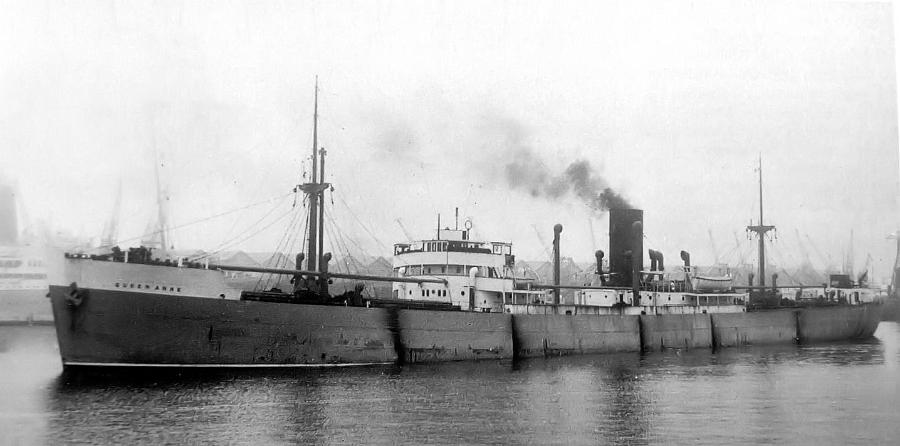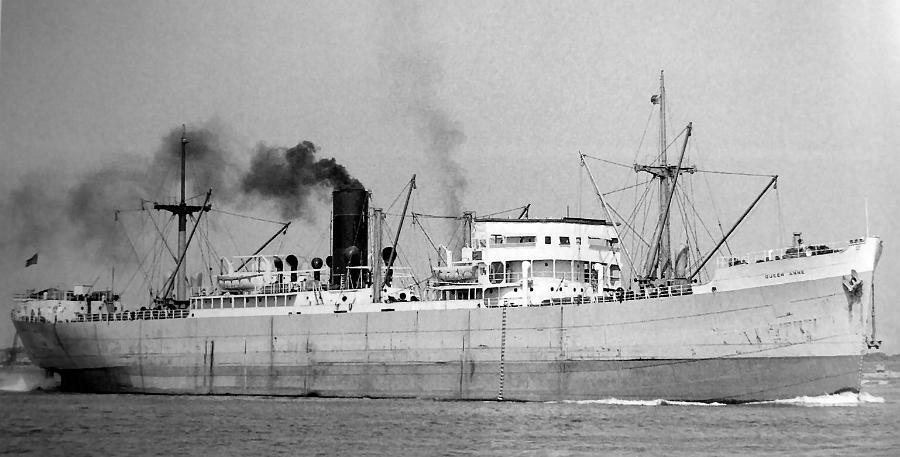More Good News to read!...
The origin of the Nutmeg: "
I have asked Dave Clark’s permission to reprint this fascinating email he sent me regarding the possible origin of my lifeboat, the Nutmeg of Consolation. The only documentation I have concerning her parent ship is a certificate indicating that she belonged to the HMS Queen Ann. I knew this ship had been damaged by a German sub in WW2 but I didn’t know the details. Read on….
Thomas, Hello. I’m relatively new to the Flat Earth Society (actually I just joined) but I have been fascinated with your blogs…especially concerning your lifeboat/recording studio. You had written that she came from the HMS Queen Anne , a motor merchant ship built in 1937. I did some research on the Queen Anne and discovered some rare photos of her (see attached). She was anything but glamorous, but beautiful in her own right. Apparently she was a work-horse during her short life—not to mention solid, reliable, and beloved. It looks as though she had two lifeboats on the starboard side, however, the lifeboat in the forward position is smaller than that located behind it, but that may either be the camera angle or my eyes. On her port it looks as though she carried only one lifeboat; and this too looks like the larger one located at the same position on the starboard side. I believe that one of these two aft lifeboats is your Nutmeg of Consolation . If so, there is a fifty-percent chance that your boat was responsible for rescuing over a score of sailors after a German U-Boat attack.
The Queen Anne had left Manchester on 9 February 1943 with Master Charles Hicking Radford at her helm. She was bound for Beirut, Lebanon by way of Capetown, South Africa and was scheduled to make stops at the port of Aden (in today’s Yemen) and Alexandria, Egypt. She was carrying 6,126 tons of government stores and 698 tons of general cargo including explosives. She was never to reach her final destinations. Early in the morning of 10 February 1943, the Queen Anne was attacked by a German U-Boat, U-509, commanded by German naval Captain Werner Witte. Between 26 October 1942 and 2 April 1943, U-509 had attacked 9 British vessels, sinking 6 and damaging 3 others. The Queen Anne was the smallest vessel destroyed by Witte’s torpedoes (which, for some reason, makes me all the more proud of her). Witte attacked the Queen Anne just after her departure from Capetown and she descended to her watery grave just eight miles south-southwest of Cape Agulhas, South Africa.
After sinking the Queen Anne, U-509 was attacked by the ASW trawler St. Zeno . The St. Zeno opened fire on Captain Witte with both gunfire and seven depth charges…but to no avail. U-509 survived unscathed. The St. Zeno rescued 18 sailors from the Queen Anne. It is difficult to know for sure if the sailors were plucked from the water or from a lifeboat. It is certain, however, that 22 more survivors from the Queen Anne did make landfall—via lifeboat—at Bredasdorp near Cape Agulhas. Sadly, the Queen Anne’s master, Charles Radford, along with two crew members and two gunners were lost in the attack and are believed to have gone down with their ship. As for German Captain Witte, he was killed along with his entire crew, 54 men, in the mid-Atlantic on 15 July 1943 by homing torpedoes from “Avenger” aircraft belonging to the USS Santee.
When I look at the pictures of your beautiful Nutmeg of Consolation I only wish she could speak to you and tell you her stories. Perhaps her life was more exciting after 10 February 1943, but I doubt it. I see that since her tenure as a lifeboat she has taken on a both a cabin and wheelhouse and she is more lovely than ever. I once heard a quote long ago that if we ever find ourselves in a lifeboat we must remember to sing! How very ironic. As she looks out to the North Sea from her dry-land home, I don’t sense she misses it much—even when she sees the other ships float past. She did her duty. She sits proud with new paint and a new life. I know that you love her and care for her—perhaps better than she has ever been—and may she ever care for and inspire you! Take care.
Dave Clark
Annotated Bibliography:
The pictures of the Queen Anne were found at http://www.photoship.co.uk/. This fascinating site has four photographs of the Queen Anne as well as countless additional photos of hundreds (if not thousands) of other vessels. The site also includes links to additional databases. For the Queen Anne’s original entries in Lloyd’s Register of Ships see the searchable database at http://www.plimsollshipdata.org/ship.php?ship_id=33064&name=Queen Anne. There are copious amounts of online information regarding German U-Boats, but one of the best is at www.uboat.net. For information on U-509, Captain Werner Witte, and the Queen Anne please see http://www.uboat.net/allies/merchants/ships/2646.html. More on Captain Witte and U-509 may be found in Rainer Busch and Hans-Joachim Roll’s German U-Boat Commanders of World War II: A Biographical Dictionary. This book details the service records of some 1,400 officers of the German Kriegsmarine. See page 291 for U-509.
"

No comments:
Post a Comment